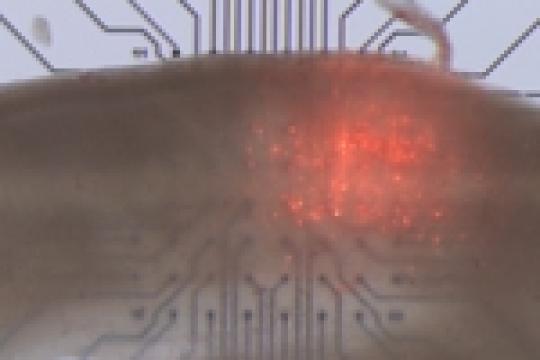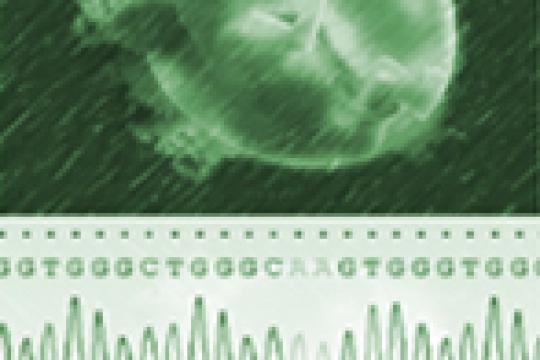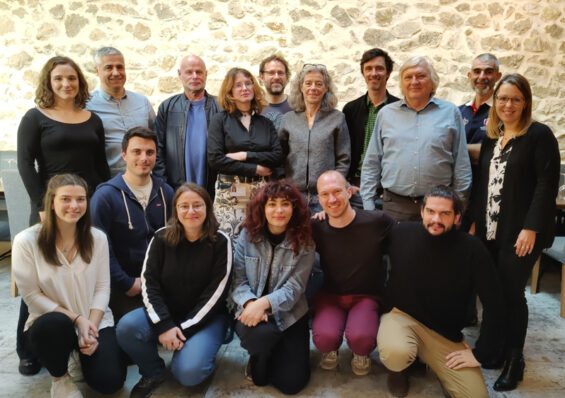Thème de recherche
Notre équipe étudie les Malformations du Développement Cortical (MDCs), qui sont des causes majeures de retard mental et d’épilepsie pharmaco-résistante chez l’enfant.
Nous réalisons des études multi-displinaires, impliquant morphologistes, biologistes moléculaires et électrophysiologistes. De plus, nous avons établi des collaborations avec des cliniciens et généticiens (projet Européen EPICURE), nous permettant une évaluation transversale de nos travaux de recherche.
Nous concentrons nos efforts sur :
[1] l’identification de nouveaux gènes et acteurs moléculaires impliqués dans les processus de migration neuronale, et étant perturbés dans les MDCs;
[2] une meilleure compréhension du lien entre génotype et phénotype, et du processus conduisant à un patron de migration anormal;
[3] la caractérisation des mécanismes physiopathologiques responsable de l’épileptogenèse dans les MDCs, de façon à identifier précisément la zone génératrice des crises, à décrire ses propriétés et les mécanismes de genèse des crises, pour, à terme, suggérer de nouvelles approches thérapeutiques.
Projets spécifiques
Nos projets spécifiques sont les suivants :
- aIdentification de nouveaux gènes candidats impliqués dans la migration neuronale et les MDCs
- bMécanisme de genèse des MDCs
- cAnalyse Morphofonctionelle des réseaux hétérotopiques
- dRépercussions fonctionnelles des défauts de migration neuronale : analyse du rat DCX knockdown
- eEpilepsies et encéphalopathies développementales d'origine génétique et virale

Identification de nouveaux gènes candidats impliqués dans la migration neuronale et les MDCs
C Cardoso (PI)
avec E Pallesi, A Carabalona, PPGI
Dans ce sous projet, nous proposons de réaliser des cribles fonctionnels qui s’appuient sur l’ARN interférence (ARNi) in vivo afin d’identifier de nouveaux gènes de MDCs.

Mécanisme de genèse des MDCs
C Cardoso (PI)
avec A Carabalona, S Beguin, H Becq, E Pallesi, PPGI
Ce sous-projet a pour objectif d’élucider les mécanismes physiopathologiques à l’origine de l’épileptogenèse, en mettant à profit des nouveaux modèles de malformations corticales obtenus chez le rat grâce à la méthode d’ARN interférence in utero.

Analyse Morphofonctionelle des réseaux hétérotopiques
J-B Manent (PI)
avec C Cardoso, L Petit, H Becq, I Jorquera, A Carabalona, PPGI
et des collaborations avec les équipes de I Bureau, V Crepel et L Aniksztejn
Dans ce sous-projet, notre but est de mieux décrire les réseaux neuronaux hétérotopiques, en combinant différentes méthodes de « circuit mapping » : des méthodes neuro-anatomiques conventionnelles, des outils de biologie moléculaire et la méthode de ‘laser scanning photostimulation’.

Répercussions fonctionnelles des défauts de migration neuronale : analyse du rat DCX knockdown
J-B Manent (PI)
avec C Cardoso, L Petit, H Becq, I Jorquera, A Carabalona, PPGI
et des collaborations avec les équipes de V Crepel and L Aniksztejn
Dans ce sous-projet, notre but est d’identifier la structure génératrice des crises chez le rat DCX knockdown, et de décrire ses propriétés et sa connectivité.

Epilepsies et encéphalopathies développementales d'origine génétique et virale
P Szepetowski (PI) et S Bauer (PI)
avec N Burnashev, S Tarhini, E Buhler, PBMC
Nous visons à étudier et à cibler les altérations pathologiques d’origine génétique ou non génétique (e.g. infections virales) qui surviennent tôt dans le développement du cerveau et qui peuvent avoir des conséquences sévères et à long terme sur le développement et le fonctionnement du cerveau.
Mots clés
Développement du Cerveau, Epilepsie, Cortex Cérébral, Malformations du Développement Cortical, Migration Neuronale, Modèles Animaux
Approches expérimentales
Méthodes Histologiques et Neuroanatomiques, Biologie Cellulaire et Moléculaire (Interférence ARN, électroporation in utero), Culture cellulaire et d’explants, Enregistrements Extracellulaires Multi-sites sur Matrices d’électrodes, Imagerie time-lapse
Collaborations et anciens membres
Collaborateurs:
– Epicure European network (Coordinateur G Avanzini)
– Renzo Guerrini (Université de Florence, Italie),
– Massimo Pasqualetti (Université de Pise, Italie)
– Heiko Luhman (Université de Mainz, Allemagne)
– Jamel Chelly (Institut Cochin, Paris, France)
– William B. Dobyns (Université de Chicago, USA),
– Rikke S. Moller (Université de Copenhague, Danemark)
– Hiroshi Kawasaki (Université de Tokyo, Japon)
Anciens membres:
– James Ackman (Yale University)
– Sabrina Khantane (Invitrogen)
– Irina Popova
– Aurélie Carabalona (Columbia University)
– Léa Corbières
Financements
– Communauté Européenne (EC contract number LSH-CT-2006-037315 (EPICURE) FP6 – Thematic priority LIFESCIHEALTH)
– ANR: 2006 neurosciences neurologie et phychiatrie (ANR-06-NEURO-008-01 contract number RPV06055ASA)
– ANR: 2009 Programme Retour Post-doctorants (contract number RPV09010AAA) to JB Manent
– Fondation J Lejeune to JB Manent
– FRC Rotary to A Represa
– Europe/INSERM/Région PACA – PhD fellowship to A Carabalona
Stages, thèses, post-docs
L’équipe accueille des étudiants niveau M1, M2, doctorat ou post-doctorat.
Candidatures à adresser par email à Alfonso Represa.














